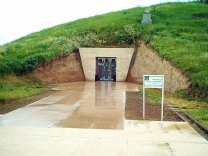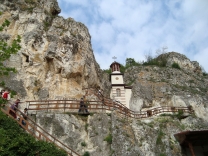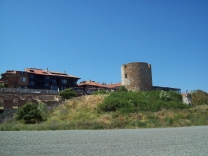No video yet

Shumen fortress
The Shumen fortress (Bulgarian: Шуменска крепост, Shumenska krepost) is an archaeological site overlooking the city of Shumen in north-eastern Bulgaria.
It is an ancient fortress with historical links to a village nearby traced to early Iron Age and later owned by the Thracians in the 5th century BC. Then, from 2nd to 4th centuries AD, it was controlled by the Romans who built towers and walls, and it was refurbished by the Byzantines as their garrison town. Shumen thrived in the Middle Ages as an important stronghold of the Bulgarian Empire. In 1444 the fort was destroyed by the Ottomans after their victory in the Battle of Varna over a Christian army under Władysław III of Poland. The fortress remained deserted ever since.
Restoration works on the fortress commenced in 2012 under the project titled “Bulgaria Begins Here”, and was completed partially in 2015 with financial assistance provided under the European Economic Area (EEA) and Norway Grants to the Shumen Municipality and the Shumen Regional Museum of History.
Location
The fortress is built over a hill which gives a commanding view of the Shumen city. It is located at a distance of 5.5 kilometres (3.4 mi) from the Shumen city's Tombul Mosque. It is located within the Shumen Plateau Nature Park. From the entrance of the fortress, about 3 kilometres (1.9 mi) away is the "Creators of the Bulgarian State" Monument erected in 1981 during the communist regime to commemorate the 1300th anniversary of the Bulgarian state. An information center is 300 metres (980 ft) away from this monument and a 3 kilometres (1.9 mi) track from here leads to the fortress.
History
The fortress represents a substantial part of the history of Bulgaria. The Ancient Bulgars, semi-nomadic warrior tribes of Turkic peoples, not to be confused with Turkish, arrived in what is in now north-eastern Bulgaria to the south of the Danube in the late 7th century AD and founded the First Bulgarian...











